Norsepower Rotor Sails Saves Fuel
Finnish technology company Norsepower, along with project partners Maersk Tankers, Energy Technologies Institute (ETI) and Shell International Trading and Shipping Company Ltd., announced successful trial results of two Norsepower Rotor Sails onboard the Maersk Tankers product tanker, Maersk Pelican.The Rotor Sails are large, cylindrical mechanical sails that spin to create a pressure differential, the Magnus Effect, that propels the vessel forward; in this instance a Maersk Tankers’ Long Range 2 (LR2) product tanker vessel, said the company.The Rotor Sails deliver auxiliary wind propulsion to the vessel - which have operated in conditions ranging from tropical climate to arctic conditions in Europe…
VTAS All Set to Go
The Vessel Technology Assessment System Project (VTAS Project) has finished its development stage and is set to go live.The UK-based design, engineering and risk management consultancy firm BMT, in collaboration with Black & Veatch, created VTAS for the Energy Technologies Institute (ETI) in the UK. Watson Farley & Williams (WFW) is the advisor of the project.The VTAS Project ran from 1 January 2018 to 31 March 2019 and brought together the combined maritime and engineering consultancy expertise of BMT and Black & Veatch to inform the commercial maritime industry of the benefits of investing in and promoting fuel efficient technologies.The £1.8m initiative was funded by the ETI…
Rotor Sails Installed on Maersk Oil Tanker
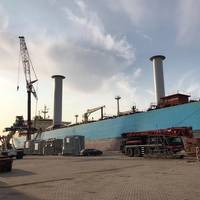
A Maersk product tanker has become the third commercially operating vessel to be equipped with Norsepower Rotor Sail auxiliary wind propulsion technology.Two Rotor Sails have been installed on board the 109,647- DWT Long Range 2 (LR2) product tanker Maersk Pelican in the Port of Rotterdam, announced project partners Norsepower Oy Ltd., Maersk Tankers, Energy Technologies Institute (ETI) and Shell Shipping & Maritime. The ship is expected to commence its first voyage with its new sails shortly.At 30 meters tall by five meters, the Rotor Sails aboard Maersk Pelican are the largest in the world.
New Project Aims to Drive Investment in Fuel Efficient Technologies
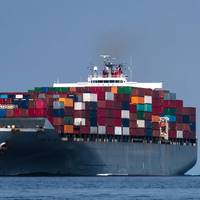
The U.K.’s Energy Technologies Institute (ETI) has commissioned a £1.8 million ($2.5 million) project that aims to assist financiers to understand and quantify the benefits in investing in fuel efficient technologies for existing and future vessels. The Vessel Technology Assessment System (VTAS) project, which will develop a practical approach to predict the benefit of a range of carbon abatement/fuel efficiency technologies on marine vessels over real-world usage cycles, will be led by BMT and delivered in partnership with Black & Veatch.
Maersk Tankers to Trial Rotor Sails

Norsepower Oy Ltd. in partnership with Maersk Tankers, The Energy Technologies Institute (ETI), and Shell Shipping & Maritime, have announced that it will install and trial Flettner rotor sails onboard a Maersk Tankers-owned vessel. The project will be the first installation of wind-powered energy technology on a product tanker vessel, and will provide insights into fuel savings and operational experience. The rotor sails will be fitted during the first half of 2018, before undergoing testing and data analysis at sea until the end of 2019.
Tidal Energy Modelling Tool Launched
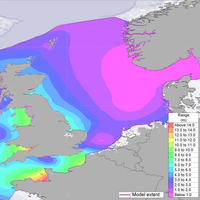
The Energy Technologies Institute (ETI) and HR Wallingford launched a tidal energy modeling tool for use by tidal energy developers to identify the most efficient sites for tidal energy converters, tidal arrays or tidal barrage schemes around the U.K. and French coastlines. The computer program, SMARTtide (Simulated Marine Array Resource Testing), incorporates a 2D hydrodynamic model of the U.K.’s continental shelf and the north-west European coastline. The software will be available to the public from May 21 as a fee-for-service via a portal on HR Wallingford’s website.
GL RC Certifies Alstom Tidal Turbine Prototype
Tidal energy is a new realm of renewable energy. As technology advances, GL Renewables Certification (GLRC) is contributing its expertise by certifying Alstom’s tidal turbine prototype. Certification of tidal turbines is one of the key development areas for the tidal industry in the future, and represents a major milestone for Alstom on the REDAPT project. GL RC and Tidal Generation Limited (TGL, now rebranded Alstom) have worked closely together to achieve ‘C-Design Assessment’ certification for Alstom’s full-scale 1MW tidal turbine. “The certification was carried out according to our Guideline for the Certification of Ocean Energy Converters,” said Andreas Schroeter, Managing Director GL Renewables Certification.
Glosten to Design Floating Offshore Wind Platform
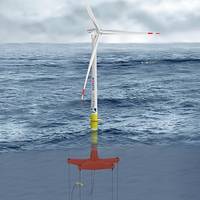
The Glosten Associates, Inc. announced it has been awarded a contract from the U.K.–based Energy Technologies Institute (ETI) for the engineering phase of the floating offshore wind turbine demonstrator using the PelaStar tension leg platform (TLP) foundation system. The $6 million (U.S.), 12-month contract will complete the Front End Engineering Design (FEED) in advance of construction and deployment of a 6 MW demonstration unit off the south coast of the U.K. as early as 2015.
World's Longest Wind Turbine Blades Development Project
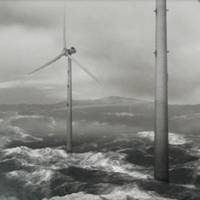
UK's Energy Technologies Institute (ETI) appoints Blade Dynamics to develop technologies for constructing ultra long-length wind turbine blades. Blade Dynamics will construct blades for the ETI of between 80 to 100 metres in length, incorporating carbon fibre rather than conventional fibre glass. This compares with blades now deployed offshore of between 60 to 75 metres in length. The intended end use for the blade technology is on the next generation of large offshore wind turbines currently under development with a capacity of 8 to10MW.
Rolls-Royce to Sell Tidal Generation Ltd to Alstom
The sale is expected to complete within the next few months, subject to closing conditions. About Tidal Generation Ltd. 1. Rolls-Royce will sell TGL to Alstom UK Holdings Ltd, a wholly owned subsidiary of Alstom. 2. TGL is a wholly owned subsidiary of Rolls-Royce Holdings plc that is managed and reported in the Energy business segment. 3. In September 2010 TGL’s 500kWe tidal stream turbine concept demonstrator unit was deployed at the European Marine Energy Centre’s (EMEC) offshore test site, off the Orkney Islands in Scotland, and generated over 200 megawatt hours of electricity supply to the grid. It was the first EMEC located project to receive Renewable Obligation Certificates.






